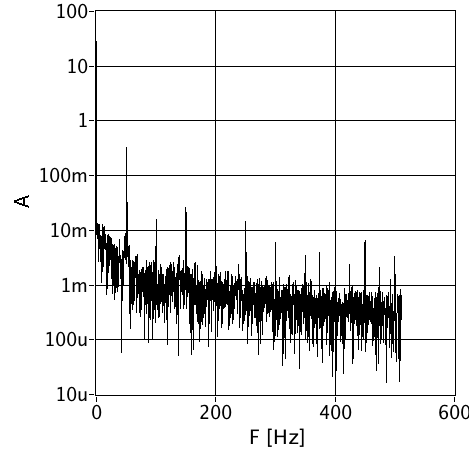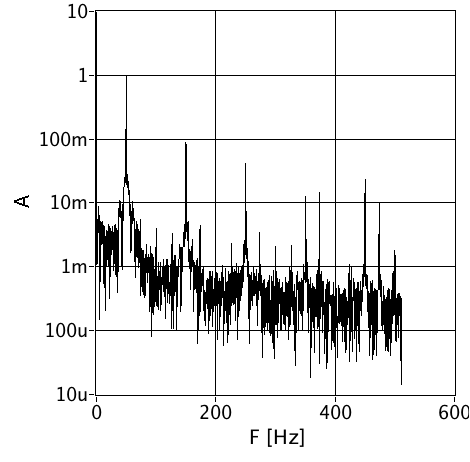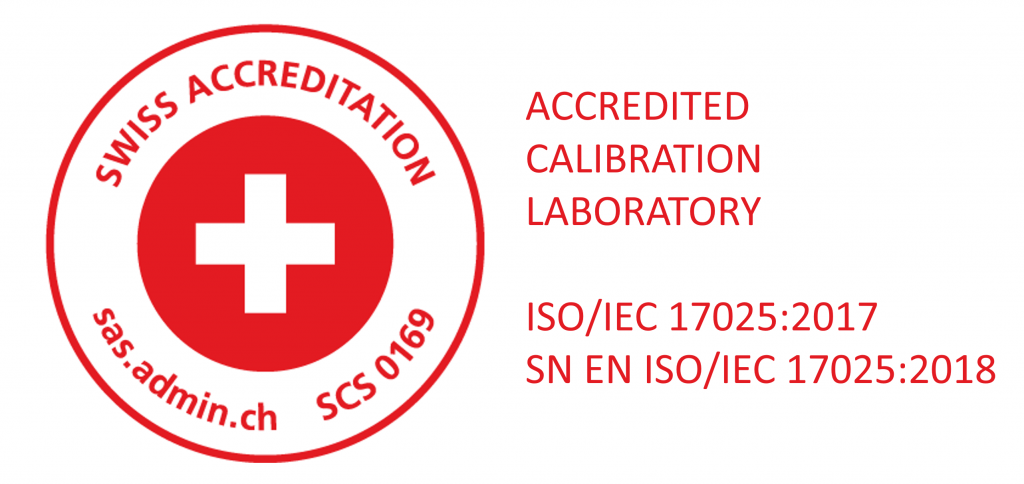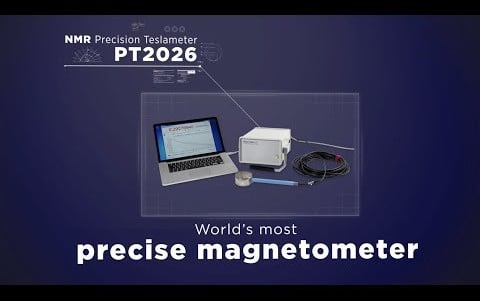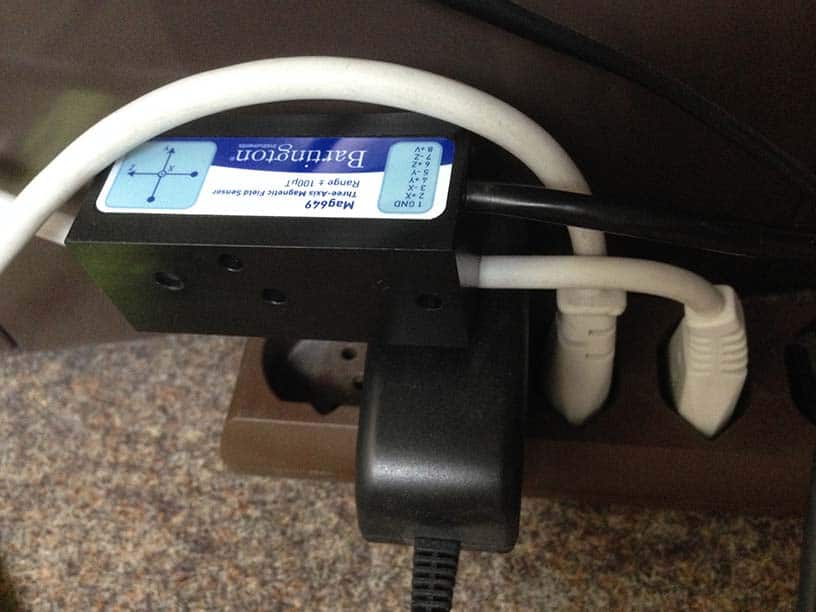
- Recompiled with LabVIEW 2015, it now supports Windows XP, Vista, 7, 8, 8.1 and 10. The Macintosh version requires macOS 10.9 “Mavericks” or above.
- In so doing, a bug – not restoring the settings of a previous session – left as mysteriously as it came.
- In addition to computing the peak-to-peak and standard deviation values of a block of measurements, you can now compute the RMS value. In particular, this allows direct verification against the limits given in the EU Directive 2013/35/EU.
- We added an “auto-rotation” feature that greatly simplifies the analysis of an AC signal.
The auto-rotation feature operates on blocks of measurements, just like the peak-to-peak and standard deviation computations. It estimates the direction of dB/dt, and projects each B vector in the block onto that axis. We have called the unit vector in the dB/dt direction B’, so the “auto-rotated” B vector is B.B’.
To illustrate the use of this new feature, I stuck a TFM1186 into the mess of power cables under my desk, as shown in the photo at the top of this page. Comparing the “raw” data with the “auto-rotated” data, and the FFT of B with the FFT of B.B’:
The FFT of B.B’ clearly shows the spectral peaks at 50 Hz and its odd harmonics. The false peak at 100 Hz that we see in the FFT of B, caused by the rectification of the AC signal in the computation B=√(Bx^2+By^2+Bz^2), is largely suppressed.
You can also compute the peak-to-peak, standard deviation and RMS values of B.B’. The help available in the application has been updated, but the manual has not. In fact, we’re already working on version 5 of the software…

